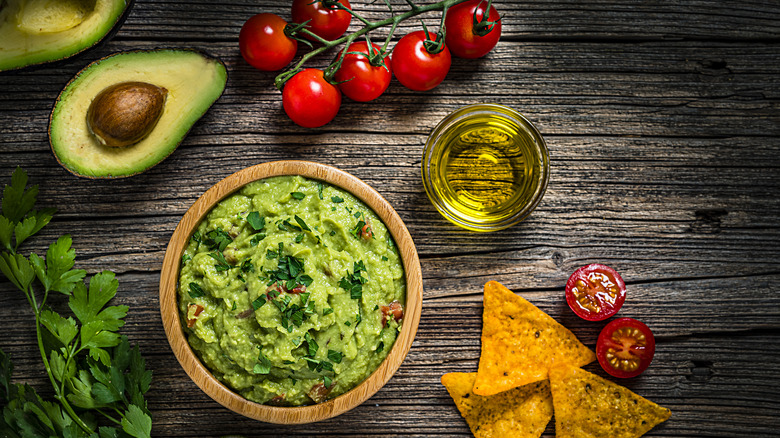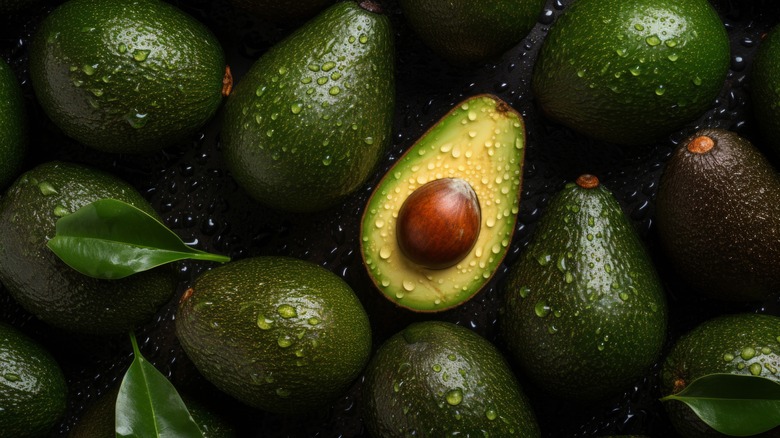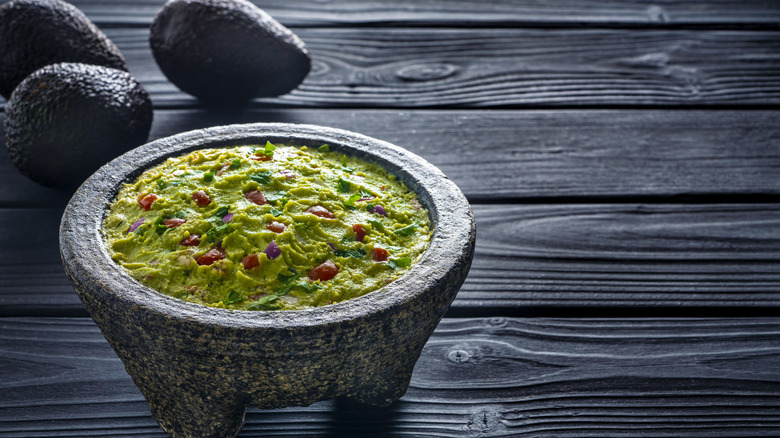The Origin Of Guacamole Is More Ancient Than You'd Think
The history of guacamole goes back a long way. No, it wasn't invented at Chipotle. It didn't achieve popularity in the U.S. until the 1940s when Mexican immigrants introduced its creamy avocado-based joys to the neighboring nation.
Its true origins lay in Mexico's Aztec Empire, which flourished in the central and southern parts of the country from the 14th to the 16th century. According to folklore, guacamole was a gift from the gods. Actually, one god in particular: Quetzalcoatl (aka, the Feathered Serpent). This gift may have appeared as early as the 1300s, although, in the Nahuatl language spoken by the Aztecs, it was referred to as ahuacamolli.
Undoubtedly, it was delicious even then. Its name meant avocado salsa, and that's what it was. But in its early incarnation, very few ingredients were used. Typically, only tomatoes, salt, and chilies were added to give the mashed avocado base more texture and spice. The ingredient changes that eventually occurred were the result of Spanish colonialism. After the Aztecs were defeated by Hernán Cortés and his conquistadors in 1521, both the name of the dip/spread and its various ingredients began to evolve.
How guacamole has evolved over the years
The Aztecs weren't the first people to consume avocados. The fruit is thought to have been eaten in Mexico as many as 10,000 years ago. The Aztecs ascribed it special attributes (like powers as an aphrodisiac) and added ingredients to increase the pleasure of consuming it. Thus, a new food dish was born.
The Spanish colonizers in Mexico couldn't adequately wrap their tongues around the word ahuacamolli, so the spread was redubbed guacamole. The Spanish were also responsible for the use of now traditional ingredients like onion, cilantro, and lime. None of the three, it should be noted, are endemic to Mexico, although tomatoes were planted in Mexico by 500 B.C. But Spain's increasing expansion of world trade opened up new markets.
A Persian lime species, for example, was introduced to the New World via the voyages of Christopher Columbus. Mexico was growing its own by 1520. Cilantro, likewise, was imported from Asia. This influx of new ingredients helped to spur the proliferation of regional guacamole variations, which could be flavored by accents as unusual as orange juice and radishes.
Then, once guacamole spread to America, game-changing ingredients like chili crisp, sour cream, and mayonnaise were also added to the mix.
Tips for making great guacamole
The original Aztec recipe for guacamole had few ingredients, so it's not hard to reproduce. For the sake of authenticity, it's best to use a molcajete and tejolote, which function as a mortar and pestle to mash up your avocados. A simple knife will facilitate the chopping of tomatoes and chilies, and the salt may be sprinkled by hand. No, you don't have to make homemade tortillas — an often mistake-prone task – but the Mexican culinary staple is a traditional complement to ahuacamolli.
The best basic guacamole recipes today, meanwhile, typically rely on the quality, not the quantity of ingredients. Lime juice should always be freshly squeezed, for instance, while avocados should be chosen that exhibit the proper ripeness level. Both under and overripe examples of the fruit can affect the flavor and texture of your finished guac. The same care should also be taken when choosing tomatoes and onions.
As for the order in which ingredients are added, always mash up the avocados first before adding anything else. If you want to add a little spice or a novel ingredient by all means do so. Guacamole is a food that has never stopped evolving, which is perhaps why 700 years or so after its invention, it's still delicious.



